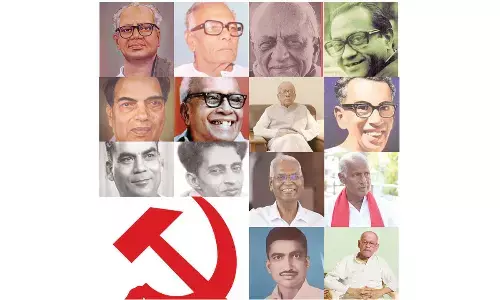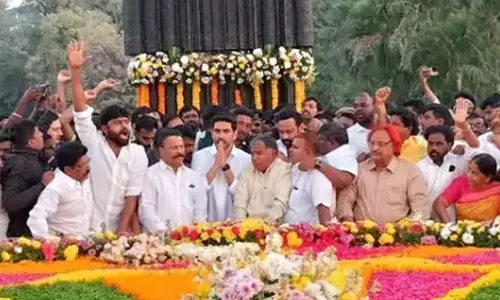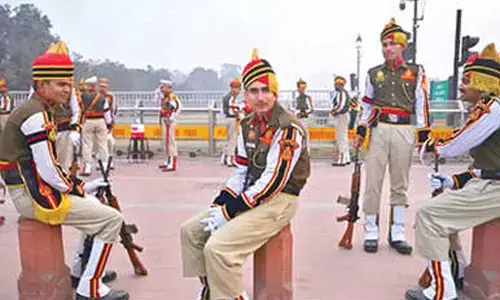India’s nuclear doctrine

The purpose behind India’s nuclear tests in 1998 was to demonstrate weapons capability. India has a doctrine of credible minimum deterrence. It means that India would launch its nukes only if its adversary mounts any nuclear attack.
The purpose behind India’s nuclear tests in 1998 was to demonstrate weapons capability. India has a doctrine of credible minimum deterrence. It means that India would launch its nukes only if its adversary mounts any nuclear attack.
Minimum deterrence
- It is a defensive orientation as it means India can carry attack in “retaliation only”.
- As per the 2003 Press Release, the deterrent by qualifying retaliation is “massive and designed to inflict unacceptable damage”.
- Since the use of nuclear weapons will endanger all life in the planet, nuclear weapons cannot be accepted as weapons of war.
- As long as they exist, their only role in security can be as a deterrent against use by an adversary.
- India is the only nuclear weapon state that has a doctrinal commitment to the abolition of these weapons as a security objective.
- As per the 2003 Press Release India will follow building and maintaining a credible nuclear deterrent, non-use against non-nuclear weapon states, continuation of strict export controls and engagement with global efforts in the pursuit of nuclear disarmament in general.
Highlights of the 2003 doctrine
- Building and maintaining a credible minimum deterrent.
- A posture of "No First Use" nuclear weapons will only be used in retaliation against a nuclear attack on Indian territory or on Indian forces anywhere.
- Nuclear retaliation to a first strike will be massive and designed to inflict unacceptable damage.
- Nuclear retaliatory attacks can only be authorised by the civilian political leadership through the Nuclear Command Authority.
- Non-use of nuclear weapons against non-nuclear weapon states;
- However, in the event of a major attack against India, or Indian forces anywhere, by biological or chemical weapons, India will retain the option of retaliating with nuclear weapons.
- Continuance of strict controls on export of nuclear and missile related materials and technologies, participation in the Fissile Material Cutoff Treaty negotiations, and continued observance of the moratorium on nuclear tests.
- Continued commitment to the goal of a nuclear weapon free world, through global, verifiable and non-discriminatory nuclear disarmament.
As long as Chinese nuclear missiles are stationed in Tibet, India needs submarines equipped with nuclear missiles. China has deployed mobile solid-fuel missiles and moving missiles in tunnels in mountainous terrain which cannot be detected from space.
This is called, “Underground Great Wall”. India should repair its missile force and create similar deterrence. Right now India is progressing slowly in this front.
Threat to India’s security is not only due to the nuclear posture but also due to social deprivation and weak economic growth.
So India should accelerate infrastructure development and regenerate growth. For a credible deterrence, constancy in doctrine should be maintained.
Nuclear Non-proliferation Treaty
- In 1968 the Nuclear Non-proliferation Treaty promised the world disarmament of Nuclear Powers and an end to nuclear proliferation and safe nuclear energy for all. 46 Years on, the US, Russia, and the UK continue to increase their lethal power of their nukes.
- It is quite obvious to see that the NPT has not been able to live up to its promises.
- The NPT was to promote disarmament of existing nuclear stockpiles, and to facilitate the use of peaceful civilian nuclear technology.
- The NPT is a victim of three operational Inadequacies:
- Firstly it has anonspecific meaning. There exist no clear and tangible targets to follow. It is merely an aspirational treaty with idealistic goals. For example it compels countries to act “in faith”.
- It is non-universal. Countries accede to the treaty voluntarily and there existsan opt out clause through which countries can choose to activate to wiggle out of being bound to these international aspirations.
- It is non-enforceable because there are no punitive mechanisms if a country fails to comply with the clauses of the NPT.
- The NPT we see lacks the simplicity in the provision of such Civilian Nuclear technologies to non-nuclear states. The clauses states simply that nuclear weapon states should adopt “general measures” to “help” non-nuclear states with no specifications on how and what type of measures will be adopted. This provides non-nuclear states with no incentive to join the NPT.
- This has led to the existence of other agreements like the US-India Peaceful Peace Atomic Energy Cooperation Act which provides India’s nuclear facilities and recently the Civil Nuclear Cooperation Agreement with Australia.
Indo-US nuclear deal
Currently all nuclear power in India is controlled by the state-owned Nuclear Power Corporation of India Ltd (NPCIL).
To begin with, the civilian nuclear deal signed in Oct, 2008 is also called 123 Agreement or 123 pact. The number 123 denotes the Section 123 of the U.S Atomic Energy Act through which the terms of agreement have been signed.
Here it has to be noted that India is not a signatory to the NPT (Nuclear Non-Proliferation Treaty) as well as CTBT (Comprehensive Test Ban Treaty). As we know the objectives of various nuclear disarmament treaties, only peaceful, civilian use of nuclear technology is only allowed but not for proliferation of nuclear weapons.
There are 5 recognised nuclear weapon states, NWS (US, Russia, U.K, France and China). They all are signatories of NPT. Apart from these countries, India, Pakistan and North Korea also have nuclear weapons though they have not signed NPT.
Israel is also believed to possess nuclear weapons but it does not disclose it and maintains ambiguity about it.
When India conducted its first underground nuclear experiment in Pokharan in 1974, the world had mixed reaction. Canada suspended nuclear aid to India as it was seen as a betrayal by India to carry out nuclear tests from the nuclear aid it was receiving.
Although India has clarified that the explosion was for peaceful purposes but critics did not approve of it.
Nuclear Suppliers Group (NSG) was established in 1975 as a response to India’s nuclear test to ensure that trade in civilian nuclear technology must not be diverted to make nuclear weapons.
Currently there are 48 member states in the NSG; India is seeking membership in NSG. But in order to become a member of NSG, a country should be party to NPT which India is not.
Now coming back to the main subject, since the NPT failed to prevent India from carrying out nuclear test, the NSG has made a principle that civilian nuclear trade will only be done with a country if it is a member of NPT.
But the US in 2008 managed to get a waiver to India from the requirements and safeguards. Prior to this the IAEA (International Atomic Energy agency) also approved the safeguards agreement with India. Being the only nuclear weapon country with no obligations to NPT, India was thus able to sign several civilian nuclear agreements.
The US also had to pass legislation (Hyde Act) which amended the U.S law to allow nuclear trade with India (as per the existing law, US could not enter into nuclear collaboration with a country that has not signed NPT).
Back then there were hair-splitting debates over the inconsistencies between Hyde Act and 123 agreement. We all have seen the hullabaloo in India during 2008.
In 2010, India passed Civil Liability for Nuclear Damage Act which that holds nuclear suppliers liable for nuclear accidents. As per Clause 17(b), the operators have “right of recourse”.
If any nuclear accident takes place, the operator can recover part of the liability from the supplier. This aspect has been the main reason, the nuclear deal has not moved forward.
Another aspect is the US demand for tracking of nuclear fuel supplied by it. After the recent "breakthrough understanding", it is said that these hurdles have been removed. India will create an insurance pool to tackle the liability issue and US has dropped from the idea of tracking the fuel and said that the IAEA safeguards are enough.
The details of the understanding have not been announced and many aspects still remain vague. As the fine print on the understanding is awaited, the announcement of insurance pool has met with a lot of criticism.
As per the understanding, India will create a “Nuclear Insurance Pool” of Rs.1,500 crore out of which General Insurance Corporation and four public sector insurers will contribute Rs 750 crore and the government will contribute the remaining Rs 750 crore. Some of the concerns are as follows:
- Why does a publicly-owned Indian insurance company give protection for foreign companies?
- Since the government will contribute Rs 750 crore to the insurance pool, why should the Indian tax payers pay for the liability of the untested reactors of foreign corporations?
- The cost of the power generated could go up since the companies have to pay insurance premium.
- The maximum liability of a supplier of a nuclear reactor is capped to Rs 1,500 crore. This is a very paltry sum because nuclear accidents run into billions of dollars (Ex: Bhopal gas leak, Fukushima disaster etc). Even after 30 years, victims of Bhopal gas tragedy still haven’t got justice.
Apart from this, many points remain vague as to how a ‘memorandum of law’ will surpass the current law. Is Section 46 which gives the victims of nuclear accidents to file liability claim against the operators under Tort Law including the supplier as defendant still there? It is not known what assurances the government gave to the US regarding the liability aspect.
Additional protocol
In 2014, India has ratified the Additional Protocol to the nuclear safeguards agreement with the International Atomic Energy Agency (IAEA)
This group controls the global supplies of nuclear material. Apart from a chance of membership, India will also get an easier access to nuclear technology from anywhere in the world.
Following the NSG’s step, Russia, France, the United Kingdom, South Korea, Canada, Argentina, Kazakhstan, Mongolia and Namibia have signed bilateral civilian nuclear cooperation agreements with New Delhi.
This will prove that India stands for nuclear non-proliferation (as was stated in a recent report that India is increasing its nuclear weapons through Mysore nuclear plant) as well as transfer of data on India’s nuclear exports to the IAEA
The Indian Civil Nuclear Liability Act which puts the onus of damages on the supplier still hampers India’s nuclear trade with other countries
The bilateral nuclear cooperation agreement between India and Japan, which would allow New Delhi to import nuclear know-how from Tokyo, is also not yet concluded.
It is only when all these hurdles are overcome that India’s atomic energy can expand as a growing and salient component of India’s energy security basket making India as Nuclear weapon state outside NPT.
What is Additional protocol?
- The IAEA is given considerably more information on nuclear and nuclear-related activities, including R&D, production of uranium and thorium (regardless of whether it is traded) and nuclear-related imports and exports.
- IAEA inspectors have greater rights of access. This includes any suspect location, at short notice (eg. two hours), and the IAEA can deploy environmental sampling and remote monitoring techniques to detect illicit activities.
- States must streamline administrative procedures so that IAEA inspectors get automatic visa renewal and can communicate more readily with IAEA headquarters.
Convention on supplementary compensation
In 2016India ratified the Convention on Supplementary Compensation for Nuclear Damage, 1997. Various implications arising out of India signing the treaty are as follows:-
1.Boost to India's nuclear commerce: It will facilitate and boost India's nuclear commerce with international partners. While India signed nuclear treaty with the US in 2010, the US companies like General Electrics and others have been reticent to be part of any nuclear projects because of terse domestic nuclear liability laws that hold suppliers responsible too, in event of any nuclear incident .The new convention which holds operator responsible will address suppliers concerns and boost trade with other countries too.
2.Uniformity with the global nuclear liability regime: It will bring the domestic nuclear liability law in the line with the norm followed globally that puts the liability on the plant operators.The move will also provide for a proper channel to disburse compensations to the victims of nuclear incidents.
3.Enhance safety and management standard: it will encourage global cooperation with the domestic operators in promoting higher level of safety and maintenance standards in accordance with internationally followed principles.
However, the primary concerns of India with regard to liability of compensations on nuclear damage remain unaddressed.Many a times, it is the faulty designs of nuclear equipment and plants that are found to be responsible for nuclear leakages and subsequent damages.
Adoption of the convention would not only put onerous responsibility on operators but also frees the suppliers from any penalty in case the finding report holds supplier's defective designs as the reason for nuclear incident.This would mean suppliers could carry nuclear trade with impunityin the event of no law holding it accountable.
The Hague Code of Conduct
- A voluntary, non-binding (legally), multilateral body.
- It is against Ballistic Missile Proliferation.
- India signed it.
- Signatories must give pre-launch notifications on ballistic missiles, space launch vehicles, and test flights.
- Annual declaration on policy of satellite launch vehicles and ballistic missiles must also be submitted.
Export control regimes
There are four export control regimes in the world- Nuclear Suppliers Group (NSG),Missile Technology Control Regime (MTCR), the Australia Group and the Wassenaar Arrangement.
Nuclear Suppliers Group (NSG)
- It was established in 1975 as a response to India’s nuclear test, to ensure that trade in civilian nuclear technology must not be diverted to make nuclear weapons.
- Currently there are 48 members. India is seeking membership.
- It controls the global supplies of nuclear material.
- India got exemption in 2008 from the NSG as a part of the nuclear deal with the U.S.
- Signing Nuclear Non-Proliferation Treaty (NPT) is essential to join the group but exceptions can be made.
- There is no voting in the group. Decisions are taken through consensus.
- Possible benefits of membership
- India will get access to nuclear technology to meet its energy demands by producing nuclear energy.
- India can update its fast breeder reactor.
- It will enhance India’s standing as a nuclear weapons state (upon some conditions of the group’s standards).
- India can participate in the rule-making.
Missile Technology Control Regime
- It is an informal and voluntary partnership among 35 countries to prevent the proliferation of missile and unmanned aerial vehicle capable of carrying 500 kg payload till 300 km.
- It seeks to control the proliferation of missile technology and unmanned delivery systems. It is one of the non-proliferating regimes.
- In 2016, India became a member of MTCR.
Benefits of membership
- It will supplement India's effort to gain entry into NSG. India thus can get access to nuclear material for civilian use.
- It will give access to high end missile technologies from technologically developed countries. It will strengthen India's national security.
- It will also give access to predator drones, unmanned arial vehicles from U.S, which are critical to fight against terrorism.
- It will facilitate export of the jointly developed supersonic missile BrahMos(by India and Russia) to interest countries such as Vietnam.
- India will become part of the rule making system instead of remaining outside the system. It will help in checking proliferation of missile technology to terrorism groups through state sponsored terrorism.
- It reaffirms India's commitment to non-proliferation and peaceful use of technology and its credibility as a responsible nation. Australia Group and the Wassenaar Arrangement
- India also seeks membership in the Australia Group and the Wassenaar Arrangement.
- Membership of the Wassenaar Arrangement would open up access to dual-use technologies - that can be used for both civil and military purposes - in aerospace, telecommunications, navigation, computing, electronics, sensors and lasers.
- Joining the Australia Group would enable India to participate in framing rules to prevent the proliferation of chemical and biological weapons, a concern in volatile South Asia.
India has also made significant progress in harmonising its Special Chemicals, Organisms, Materials, Equipment and Technology (SCOMET) export list with the control lists of the Australia Group and the Wassenaar Arrangement.
India has also been a consistent votary of non-discriminatory disarmament efforts—one of the three pillars of non-proliferation regimes, along with civil nuclear cooperation and non-proliferation itself.

















